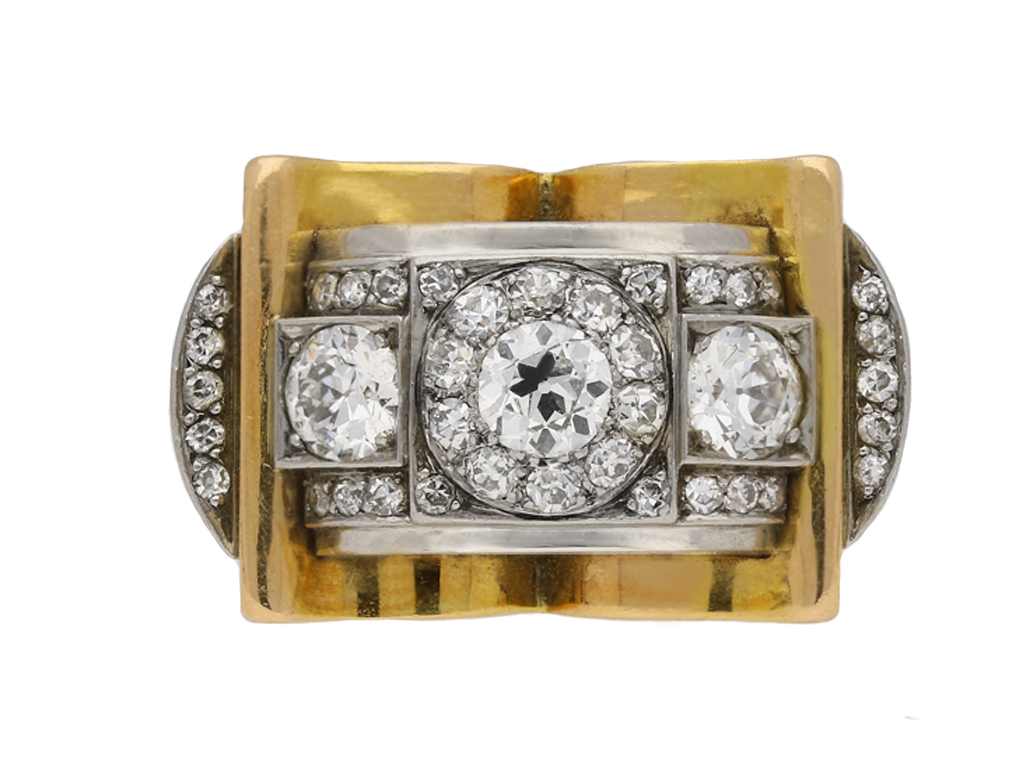14 DAY MONEY-BACK GUARANTEE - FREE WORLDWIDE DELIVERY
SAME-DAY LONDON DELIVERY

The late 1930's and early 1940's saw Europe going from the Great Depression directly into World War II. Much of the platinum and a great deal of the gold and silver were needed to fund the war. Coloured gold, sometimes combined in bi-coloured or tri-coloured pieces, was back after several decades of white metal dominance.
Designs were sculptural and three-dimensional, incorporating ribbons, bows and fabric-like folds. Bold, flowing designs were popular with channel and pavé settings to add colour. Synthetic rubies and sapphires were becoming popular and whilst almost as expensive as natural stones in those days, they could be perfectly matched and cut specifically to fit individual pieces without the large amount of wastage of natural stones.
The great jewellery houses of the time were Cartier, Boucheron, Bulgari, Garrard, Mellerio, Van Cleef & Arpels, Tiffany and Harry Winston. Cartier in particular, guided by the legendary Jean Toussaint was making famous its tiger and panther inspired jewellery. Van Cleef was promoting its revolutionary invisible setting and Bulgari was mounting large coloured stones in heavy gold collarets and bracelets.
New designer Fulco Di Verdura opened his salon in 1939 and was an instant success. His innovative designs with bright colours and inspiration taken from and using nature were worn by customers like Rita Hayworth, Laurence Olivier, the Duchess of Windsor, Cole Porter and Coco Chanel. It was for Chanel that he designed perhaps one of his most influential pieces of the decade, the baked enamel cuffs with a stone set Maltese cross. He covered shells in jewels, and eschewed the traditional bigger diamonds for the more interesting coloured stones with a twist of nature.
The emphasis of the 1940’s was a tailing off from the contrasting geometrical shapes of Art Deco and a return to bold, brave colour choices and large pieces of all kinds of jewellery, from vanity cases to extravagant hair ornaments (Van Cleef & Arpels). The age of the cocktail party was on its way and the jewellery was to reflect this for the next two decades.
Back to design periods
Connect with us
Signs up for regular emails on our new acquisitions, news and features: